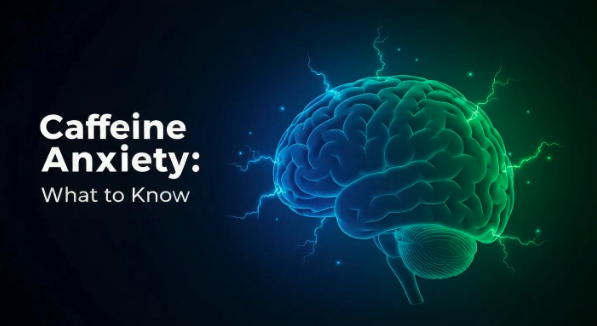The role of play therapy in addressing childhood mental health concerns
Harnessing Play: A Powerful Tool for Childhood Mental Health

Understanding the Impact of Play Therapy
Childhood mental health concerns such as anxiety, trauma, and behavioral problems require sensitive, effective intervention strategies. Play therapy emerges as a scientifically supported, engaging approach that leverages children’s natural language—play—to facilitate emotional expression, healing, and growth. This article explores play therapy’s core principles, techniques, applications, benefits, and long-term impacts, emphasizing its vital role in nurturing resilient, emotionally healthy children.
What Is Play Therapy and Its Core Principles
What is play therapy and what are its core principles?
Play therapy is a structured, evidence-based method that uses the natural language of children—play—to help them express feelings, process experiences, and address emotional or psychological challenges. It involves trained therapists creating a safe, supportive environment where children can freely explore their emotions and experiences through various playful activities.
The approach is characterized by several foundational principles. Safety and trust are fundamental; children should feel secure and accepted, encouraging open expression. The therapist adopts a child-centered approach, allowing children to lead their own play, which helps uncover underlying feelings and conflicts.
Symbolism plays a vital role, as children often use toys, art, and role-play to symbolize their internal states and experiences. This symbolic play enables children to process complex emotions non-verbally, which is especially helpful when verbal expression is limited.
Empowerment is another core component. Play therapy fosters a sense of control and confidence in children by allowing them to choose activities and explore solutions independently. Building a strong therapeutic relationship with empathy and respect helps children feel understood and supported.
Various forms of play therapy exist—such as child-centered, directive, cognitive-behavioral, and family play therapy—all of which aim to promote emotional regulation, social skills, and resilience.
Overall, play therapy leverages the natural learning and communication mode of children—play—to facilitate healing, emotional growth, and healthy development.
Techniques and Methods Used in Play Therapy

What techniques and methods are commonly used in play therapy?
Play therapy incorporates a wide array of techniques and tools tailored to help children express their feelings and address emotional or behavioral difficulties. The most common methods involve the use of toys, including dolls, action figures, and cars, which serve as symbolic representations of children’s internal worlds. Art supplies like crayons, paints, clay, and modeling materials enable children to explore their emotions creatively.
Sandtray activities are popular, allowing children to build scenes using miniature figures and objects, facilitating non-verbal storytelling and trauma processing. Puppets and musical instruments provide additional avenues for expression, especially for children who find verbal communication challenging. Storytelling, whether through created stories or shared narratives, supports emotional insight and cognitive development.
Structured play activities, such as role-playing and imaginative games, enable children to simulate real-life situations, practice problem-solving, and learn new social skills. Creative arts like drawing, painting, or modeling help children externalize their feelings and experiences.
Emotion-focused play techniques include imagery work and family visualization exercises, where children project their inner experiences or visualize family dynamics to foster understanding and healing. Communication games and self-control strategies, such as turn-taking and delaying gratification, teach children impulse control and emotional regulation.
Play therapists may also incorporate playful interventions such as magic tricks, stress inoculation exercises, or playful breathing techniques to help children manage anxiety and stress.
Overall, play therapy uses these tools and methods within a structured environment to promote emotional growth, resilience, and social competence. The therapist carefully selects and adapts these techniques based on the child's specific needs and developmental level, ensuring a supportive and effective healing process.
Addressing Childhood Anxiety, Trauma, and Social Difficulties through Play

How does play therapy help children with mental health concerns such as anxiety, trauma, or social difficulties?
Play therapy is an evidence-based method that uses the natural language of children—play—to help them express and understand complex emotions they may not yet have the words for. When children face anxiety, trauma, or social struggles, they often find it hard to articulate their feelings verbally. Play therapy creates a safe, supportive environment where children can explore these emotions through activities like role-playing, storytelling, or art.
During sessions, children might reenact traumatic events or social interactions with toys or dolls, which helps them process experiences symbolically. This process moves feelings from nonverbal, emotional areas of the brain into more conscious awareness, facilitating emotional relief and understanding.
Research indicates that play therapy can significantly decrease negative emotions, such as fear, anger, or sadness. It also helps children develop skills like emotional regulation and problem-solving, which are essential for resilience. Many children show improved social skills, better communication, and greater self-confidence after engaging with playful, therapeutic techniques.
Typically lasting about 20 sessions, this therapy is especially effective for children who have experienced major life changes, trauma, or behavioral issues. Overall, play therapy supports children in resolving emotional and psychosocial challenges, allowing them to cope better with their feelings and build healthier emotional lives.
Benefits, Effectiveness, and Scientific Evidence of Play Therapy

What are the benefits and evidence supporting the effectiveness of play therapy?
Play therapy provides numerous advantages for children's mental health. It helps reduce emotional and behavioral problems, such as aggression, defiance, or social withdrawal. Children also benefit from alleviating symptoms associated with anxiety and depression, gaining emotional regulation skills that contribute to overall well-being.
Empirical research, especially meta-analyses of over 100 outcome studies, supports the therapy's positive effects. These studies report large effect sizes, indicating significant improvements in children's emotional and behavioral functioning. Randomized controlled trials (RCTs), considered the gold standard in research, show that play therapy can lead to meaningful reductions in negative emotions, trauma symptoms, and problematic behaviors.
Designed mainly for children aged 3 to 12, the therapy adapts well to settings like clinics, schools, and hospitals. It employs creative activities such as role-playing, art, and storytelling, allowing children to express feelings they might struggle to articulate verbally. Qualified therapists create a safe space, guiding children through their emotional experiences and helping them develop resilience.
The benefits of play therapy go beyond immediate symptom reduction. It fosters emotional regulation, enhances social skills, and encourages resilience. Children learn to understand and manage their emotions, develop problem-solving abilities, and build confidence. Overall, scientific evidence supports the role of play therapy as an effective approach to supporting emotional health in children with diverse psychological needs.
Target Populations Benefiting from Play Therapy

Who can benefit from play therapy?
Play therapy is a versatile and effective approach for helping children through various emotional, behavioral, and developmental challenges. It is mainly suited for children between the ages of 3 and 12, although some adaptations can extend its use to adolescents and even adults under certain circumstances.
Children experiencing trauma, such as abuse, domestic violence, or natural disasters, often find play therapy beneficial. It provides a safe outlet for processing painful experiences and re-establishing a sense of security.
For children with anxiety and depression, play therapy offers a non-verbal way to express fears and worries, helping them manage and reduce these symptoms. Children with Attention-Deficit/Hyperactivity Disorder (ADHD) and autism spectrum disorders can develop social skills, improve communication, and regulate emotions through tailored play activities.
Children facing family transitions, like divorce or separation, often experience emotional upheavals. Play therapy helps them process their feelings and rebuild trust, especially when family dynamics are involved.
In addition, children with speech impairments or developmental disorders benefit from play therapy by enhancing their communication skills and supporting social interaction.
Children who have suffered from or witnessed traumatic events, such as accidents or loss, use play as a symbolic language to re-enact and cope with their experiences. This approach helps foster resilience and emotional healing.
Furthermore, those showing behavioral issues, including aggression, defiance, or social withdrawal, can learn healthier behaviors and improve their social skills through guided play activities.
Overall, play therapy is a personalized approach that caters to children with diverse needs. Its adaptive techniques make it a powerful tool for promoting emotional well-being, encouraging social development, and fostering resilience among children facing life's challenges.
Long-Term Impacts and Outcomes of Play Therapy

What are the potential long-term outcomes of play therapy intervention?
The long-term effects of play therapy are profound and generally lasting. Research consistently shows that children who undergo play therapy, especially approaches like Child-Centered Play Therapy (CCPT), experience meaningful improvements in emotional resilience and self-esteem. These children tend to develop stronger coping skills and show a decreased tendency toward anxiety and problematic behaviors.
Children with developmental disorders such as ADHD, autism, or those who have endured trauma often display reduced negative emotions and enhanced social interaction capabilities. The therapy helps them learn to regulate their feelings and behaviors better, which benefits their social relationships and emotional health over the years.
Beyond emotional and behavioral benefits, play therapy positively influences academic performance. Many children demonstrate improvements in literacy, language, and mathematical skills, likely due to enhanced concentration, motivation, and self-confidence fostered through therapeutic play.
The timing of intervention matters: implementing play therapy during critical developmental periods can lead to more durable outcomes. Children who participate early in life often carry these positive changes into adolescence and adulthood, leading to healthier relationships, greater adaptability, and overall well-being.
In sum, the enduring benefits of play therapy extend beyond immediate emotional relief to foster long-term resilience, improved social functioning, and academic success, supporting children in navigating life's challenges with greater ease.
Scientific Support and Future Directions for Play Therapy
Is there scientific evidence supporting the use of play therapy?
Yes, there is substantial scientific evidence backing the effectiveness of play therapy as a treatment for children facing emotional and behavioral challenges. Numerous research efforts, including meta-analyses and randomized controlled trials, have consistently demonstrated positive outcomes. These studies show significant reductions in symptoms of anxiety, depression, trauma, and behavioral problems following play therapy interventions.
A wide body of literature supports the use of various theoretical models within play therapy, such as child-centered, psychodynamic, and cognitive-behavioral approaches. This diversity allows therapists to tailor interventions to meet individual needs effectively. Most notably, children aged 3 to 12 tend to benefit most from this approach, with evidence indicating improvements in social skills, emotional regulation, communication, and resilience.
Research published in reputable journals, such as the International Journal of Play Therapy, provides peer-reviewed validation of these findings. For example, meta-analytical studies have reported moderate to high effect sizes, confirming that play therapy can produce meaningful behavioral and emotional improvements.
While some critiques address the variability in treatment protocols and the need for standardization, overall, evidence from empirical research endorses play therapy as an evidence-based intervention. As a result, it is increasingly recognized by mental health organizations worldwide as a valid and effective treatment for children dealing with various psychological difficulties.
Looking ahead, ongoing research aims to refine and standardize play therapy techniques. Efforts include establishing best practices, developing outcome measures, and integrating technological innovations like virtual play environments. These initiatives will help improve consistency, accessibility, and efficacy of play therapy across diverse settings.
Furthermore, there is a push to expand the integration of play therapy within family, school, and community contexts. By embedding these practices into everyday environments, therapists and support systems can foster ongoing emotional development and resilience, making play therapy an accessible and sustainable resource for children's mental health.
| Evidence Type | Findings | Impact on Practice |
|---|---|---|
| Meta-analyses | Moderate to high effect sizes | Validate overall effectiveness |
| Randomized Controlled Trials | Significant symptom reduction | Support for specific interventions |
| Peer-reviewed articles | Improved social, emotional skills | Establish credibility and standards |
| Organizational endorsements | Recognized by APA and APT | Formal acceptance and promotion |
As research continues to evolve, the future of play therapy looks promising with increased standardization, technological integration, and broader applications fostering children’s psychological growth.
Embracing Play as a Therapeutic Tool
As a scientifically validated, adaptable, and engaging approach, play therapy plays a crucial role in addressing and improving childhood mental health. By fostering a safe space for emotional expression and resilience-building, play therapy offers lasting benefits that can shape healthier, more adaptive futures for vulnerable children. Continued research, professional training, and integration into family and educational systems will further enhance its effectiveness, making it an indispensable component of comprehensive mental health care for children.
References
- Understanding the Role of Play Therapy in Child Psychology
- An Overview of Play Therapy - PMC - PubMed Central
- Play Therapy: A Key to Unlocking Children's Emotional Well-Being
- Play Therapy Makes a Difference
- The Role of Play Therapy in Addressing Behavioral Challenges in ...
- The Role of Play Therapy in Children's Counseling
- How Play Therapy Transforms Children's Mental Health - The AOC
More Resources
A team ready to start your journey.
Get in touch — today.
We are a safe space – a haven for exceptional individuals to receive discreet, personalized, in-person treatment and care.
.avif)



.webp)






